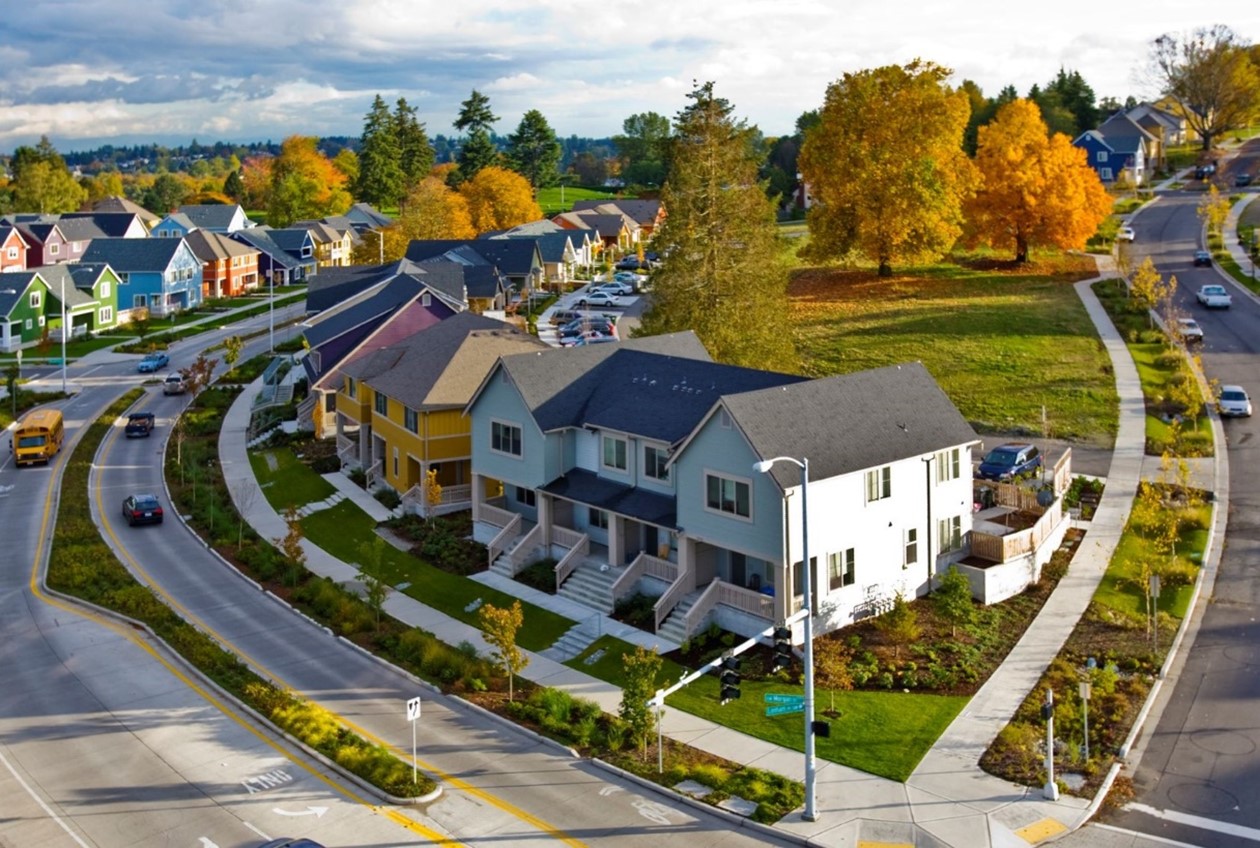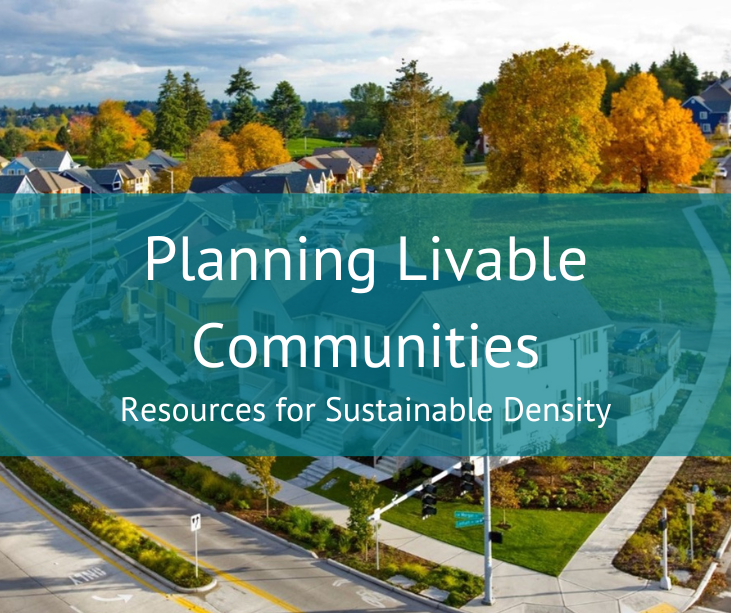Planning for sustainable, affordable, and livable communities is key for a healthy future.
More...
Practitioners working on Puget Sound recovery—scientists, engineers, policy folks, budget analysts, land use planners, developers, landscape architects and community members comprise what we sometimes call the “Puget Sound recovery community.” These efforts are guided, and grounded in the ideas generated from expertise and lived experiences in local communities, non-profits and tribes. Collectively the National Estuary Program Stormwater and Habitat Strategic Initiative Lead Teams have identified infill development and Smart Growth as top priorities. Smart Growth focuses development in existing communities, utilizing a mix of land uses that offer a range of housing opportunities. This creates more attractive communities that are compact and walkable with a variety of transportation choices; while also preserving open space, natural beauty and critical environmental areas and encouraging community and stakeholder collaboration in development decisions.

Highpoint Housing Development, Seattle source: SvR Design
Washington cities and counties are faced with potentially competing legislative mandates. These include increasing housing stock through Middle Housing and accessory dwelling units (ADUs), and updates to the Growth Management Act (GMA) that includes a new mandatory climate element to local comprehensive plans for higher growth counties and their cities. Housing, habitat for people and critters alike, green stormwater infrastructure, and trees/green space are all competing for finite space within our cities. Increasing housing supply, while maintaining a healthy tree canopy cover for climate resilience and as an amenity to keep people living in cities, is a challenging balance to meet. An examples of a resilient livable community is depicted above. Missing middle housing includes two or more attached, tacked or clustered homes.
In addition to competing legislative mandates, there is often pressure to create strategies that only focus on one element of cities: much needed housing-- but this cannot be the only guiding principle in designing communities people want to live and work in.
We are collaborating to build and support resilient and desirable communities. If you want to be involved in future outreach, workshops or collaboration please contact: david.pater@commerce.wa.gov
Guidance and Resources
The Department of Commerce along with its State partners at the Departments of Ecology, Natural Resources, Fish and Wildlife, and the Washington Stormwater Center at Washington State University-Puyallup has developed a number of guidance documents to assist local communities with the above challenges:
- Commerce model middle housing ordinances to assist communities with middle housing and density
- Commerce - Integrated Watershed and Stormwater Planning Guidance (developed by Commerce and the Puget Sound Regional Council with input from both the National Estuary Program Stormwater and Habitat Strategic Initiative Leads)
Ecology is developing a new funding program to support stormwater permittees implementing Stormwater Community-Based Public-Private Partnership Funding Program - Department of Ecology If interested, please complete the Ecology’s CBP3 project's Request for Technical Assistance Form indicating your level of interest by 03/31/2024.
Below are a number of additional resources that provide important grounding for these conversations:
- Trees for Resilience (reinforcing the stormwater-urban forestry linkages and stormwater and includes a technical report, Handbook and interactive toolkit)
- Philadelphia Green City Clean Water presentation (about building successful GSI programs): Philly CSO.pdf | Powered by Box
- Planning for Biophilic Cities (APA’s seminal guide on biophilic cities): Planning for Biophilic Cities.pdf | Powered by Box
- Urban-Nature for Community and Climate.pdf (a guide to linkages between GSI and climate resilience and livability)| Powered by Box
- Bryant Heights: Making Space for Trees on Vimeo (This short video on a Seattle infill housing development is an example of a site designed to retain green space)
- Equitable Urban Density and Healthy Communities (A video taped conference presentation on how to build equitable and healthy cities)
- Portland’s Tree Density Requirements for Development (requirements for minimum tree canopy for all development)
Authors: David Pater and Heidi Siegelbaum
Did you know?
The Department of Commerce is working with the Stormwater and Habitat Strategic Initiatives on upcoming funding opportunities for jurisdictions to advance Puget Sound recovery through land use and comprehensive planning.

